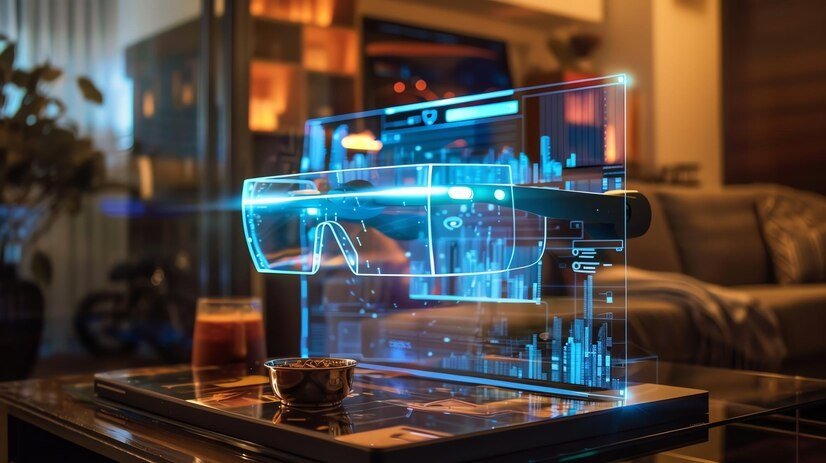The advent of 3D printing, also known as additive manufacturing, has been nothing short of revolutionary. This technology, which involves creating three-dimensional objects layer by layer from digital models, has significantly impacted various manufacturing industries. While 3D Printing is Disrupting was initially considered a niche technology, its capabilities have expanded rapidly, disrupting traditional manufacturing processes across the globe. In this article, we’ll explore how 3D printing is changing the landscape of manufacturing, the benefits it offers, and the challenges that lie ahead.
The Rise of 3D Printing in Manufacturing
A Brief History of 3D Printing
3D printing technology has been around since the 1980s, with the first patent for stereolithography filed by Charles Hull in 1986. However, it wasn’t until the 2000s that 3D printing began to gain traction in the manufacturing industry. Initially, the technology was used primarily for prototyping and small-scale production. As 3D printing technology evolved, it became more accessible, and its applications expanded to include a wide range of industries, from aerospace to healthcare.
Transition from Prototyping to Production
The shift from using 3D printing solely for prototyping to full-scale production is one of the most significant developments in the technology’s history. Traditional manufacturing methods, such as injection molding and CNC machining, often require expensive tooling and setup costs, making them less viable for low-volume production. 3D printing, on the other hand, allows for the creation of complex parts without the need for molds or extensive tooling, making it ideal for custom or limited-run production.
Key Industries Disrupted by 3D Printing
1. Aerospace and Defense
The aerospace and defense industries have been among the earliest adopters of 3D printing technology. The ability to produce lightweight, complex geometries with high precision is critical in these sectors, where performance and safety are paramount.
Impact on Aerospace Manufacturing
3D printing enables the production of parts with intricate designs that would be impossible or extremely costly to manufacture using traditional methods. For example, GE Aviation has been using 3D printing to produce fuel nozzles for its LEAP jet engines. These 3D-printed nozzles are 25% lighter and five times more durable than those made with conventional methods.
Defense Applications
In the defense industry, 3D printing is used to produce everything from unmanned aerial vehicles (UAVs) to replacement parts for military equipment. The technology’s ability to produce parts on-demand and on-site can significantly reduce lead times and logistics costs, making it a valuable asset for military operations.
2. Automotive Industry
The automotive industry is another sector where 3D printing is making a significant impact. From prototyping to producing final parts, 3D printing is transforming how vehicles are designed and manufactured.
Prototyping and Design
One of the primary uses of 3D printing in the automotive industry is rapid prototyping. Automakers can quickly produce prototypes of new parts or entire vehicles, allowing for faster iteration and design optimization. This rapid development cycle can lead to shorter time-to-market for new models and innovations.
Customization and Spare Parts
3D printing also offers the potential for mass customization in the automotive industry. Customers can personalize their vehicles with custom-designed parts, such as dashboards, gear shifts, or even entire body panels. Additionally, 3D printing can be used to produce spare parts on demand, reducing the need for large inventories and making it easier to maintain older models.
3. Healthcare and Medical Devices
Perhaps one of the most life-changing applications of 3D printing is in the healthcare industry. The technology is being used to create everything from prosthetics to surgical instruments, and even human tissue.
Prosthetics and Orthotics
3D printing allows for the production of highly customized prosthetics and orthotics tailored to the exact measurements of the patient. This level of customization not only improves comfort and functionality but also makes prosthetics more affordable and accessible, especially in developing countries.
Medical Implants and Devices
In the field of medical implants, 3D printing is used to produce patient-specific devices such as hip and knee implants. These implants can be designed to match the patient’s anatomy precisely, leading to better outcomes and faster recovery times. Additionally, 3D-printed surgical guides and tools are becoming increasingly common, helping surgeons perform more precise and less invasive procedures.
4. Construction Industry
The construction industry is beginning to harness the potential of 3D printing to build structures more efficiently and sustainably. 3D printing in construction, also known as “contour crafting,” involves using large-scale printers to layer concrete or other materials to create buildings or components.
Impact on Building Construction
3D printing offers several advantages in construction, including reduced material waste, faster build times, and the ability to create complex designs that would be challenging with traditional methods. Entire homes and buildings have already been constructed using 3D printing technology, with some projects completed in a matter of days.
Sustainability in Construction
The ability to print with sustainable materials, such as recycled plastics or eco-friendly concrete, further enhances the environmental benefits of 3D printing in construction. Additionally, the precision of 3D printing reduces material waste, contributing to more sustainable building practices.
5. Consumer Goods
The consumer goods industry is leveraging 3D printing to create highly customized products, from fashion and jewelry to electronics and home goods.
Mass Customization
3D printing enables companies to offer mass customization, allowing consumers to personalize products to their exact specifications. For example, companies like Adidas have used 3D printing to create custom-fit shoes, while others have produced bespoke jewelry or fashion accessories.
On-Demand Manufacturing
3D printing also supports on-demand manufacturing, reducing the need for large inventories and enabling more agile production processes. This flexibility allows companies to respond more quickly to market trends and consumer demand, reducing lead times and minimizing excess stock.
Benefits of 3D Printing in Manufacturing
1. Cost-Effectiveness
One of the most significant advantages of 3D printing is its cost-effectiveness, particularly for low-volume production. Traditional manufacturing methods often require expensive molds, dies, and tooling, which can be cost-prohibitive for small batches. 3D printing eliminates the need for these upfront investments, making it more affordable to produce custom or limited-edition items.
2. Reduced Lead Times
3D printing significantly reduces lead times by allowing for the rapid production of parts directly from digital models. This speed is especially beneficial for prototyping, as it enables companies to quickly iterate on designs and bring products to market faster.
3. Complexity Without Cost
Unlike traditional manufacturing, where complexity can increase costs, 3D Printing is Disrupting allows for the creation of intricate designs without additional expenses. This capability opens up new possibilities for innovative and complex geometries that were previously unachievable or too costly to produce.
4. Sustainability
3D printing has the potential to reduce material waste significantly, as it only uses the material necessary to build the object. Additionally, the ability to produce parts locally and on demand can reduce the carbon footprint associated with shipping and warehousing.
5. Customization
The ability to produce highly customized products is another key benefit of 3D printing. This customization is particularly valuable in industries like healthcare, where patient-specific solutions can lead to better outcomes, and in consumer goods, where personalized products are in high demand.
Challenges and Future Prospects
1. Material Limitations
While 3D printing technology has advanced significantly, there are still limitations regarding the materials that can be used. Currently, 3D Printing is Disrupting is primarily limited to certain plastics, metals, and ceramics. Expanding the range of printable materials is crucial for further adoption in industries like aerospace, automotive, and construction.
2. Quality Control
Ensuring consistent quality across 3D-printed parts can be challenging, especially in high-stakes industries like aerospace and healthcare. Developing standardized processes and rigorous testing protocols will be essential to address these concerns.
3. Intellectual Property Concerns
The ease with which digital designs can be shared and reproduced raises concerns about intellectual property (IP) protection. As 3D printing becomes more widespread, companies will need to develop strategies to safeguard their IP rights and prevent unauthorized production of their designs.
4. Regulatory Hurdles
In highly regulated industries such as healthcare and aerospace, ensuring that 3D-printed parts meet strict safety and performance standards can be challenging. Regulatory bodies will need to establish clear guidelines for the certification and approval of 3D Printing is Disrupting products.
Conclusion
3D Printing is Disrupting is undeniably disrupting manufacturing industries by offering new levels of flexibility, cost-effectiveness, and innovation. As the technology continues to evolve, it is likely to become even more integral to manufacturing processes across various sectors. While there are challenges to overcome, such as material limitations, quality control, and regulatory hurdles, the potential benefits of 3D printing far outweigh these obstacles.





